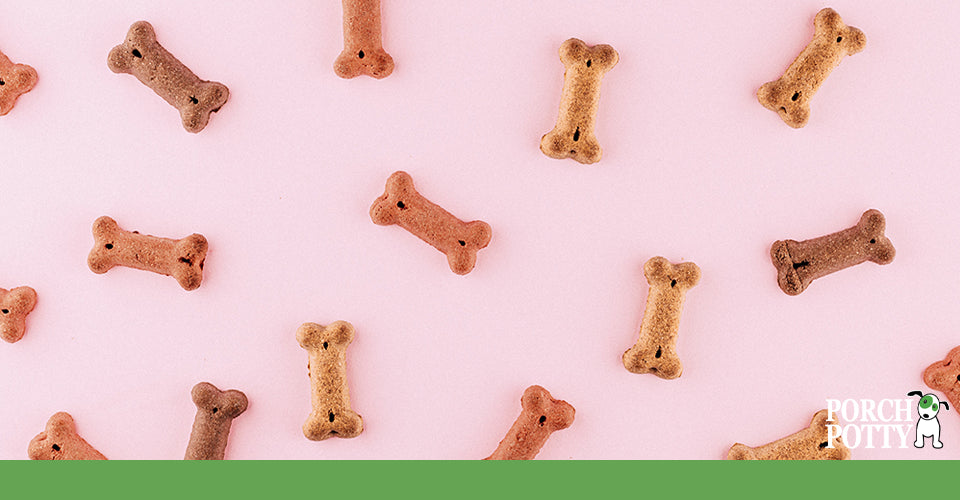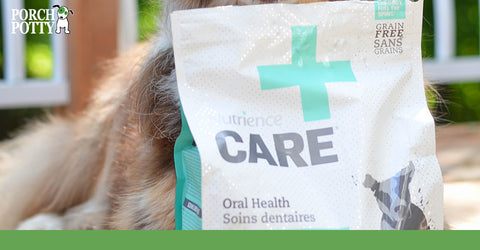
Dental health in our dogs is often one of the first things to be overlooked by dog parents. However, it’s also one of the areas of your dog’s health that can deteriorate rapidly. It affects more of our dogs’ overall health than most of us realize.
In this article I’ll go over the importance of dental health, how to care for your pet’s teeth and what a teeth cleaning at your veterinarian entails. Let’s get into it!
Why is dental health so important?
If you think about it, as humans, we take our dental health very seriously and we should treat our pet’s dental health in the same way.
It’s no secret that mouths are dirty, especially a dog’s mouth. Their mouths can harbor a significant amount of bacteria, especially since they don’t brush their teeth. This bacteria builds up in the form of tartar and plaque, which can negatively affect the integrity of their teeth and potentially cause systemic infection.

Think of your dog's teeth like icebergs, you only see a small part of the story.
The bacteria will travel up the tooth, to the gum line and get underneath the gums causing gum disease and recession.
Bacteria from your dog's teeth may enter the bloodstream causing a systemic infection affecting the heart and other vital organs.
It also affects the actual roots of the teeth by exposing them, from the gum recession, (which is very painful!) and compromises their structure, which means the tooth, will become loose.
Ideally, we don’t want their teeth to be loose so they are able to chew properly and because their teeth help maintain their jaw. As you can see, dental health for your dog is certainly important.
How can I maintain my dog’s dental health?
To maintain your dog’s dental health, the best things you can do are brushing their teeth, feeding a dental diet and scheduling prophylactic dentistries with your veterinarian.
Not many dogs are keen on their owner’s brushing their teeth; so if you’re not able to do that, don’t feel bad. It’s pretty rare that a dog will allow us to get in their mouth and brush their teeth. I find that using a small children’s soft toothbrush works best for maneuverability when brushing a dog’s teeth.
As for toothpaste, do not use human toothpaste on your dog. Be sure to purchase toothpaste made specifically for dogs. These can be purchased at most pet supply stores.
If you’re not able to facilitate brushing their teeth you can put your dog on a dental diet. These diets are specifically designed to help prevent tartar build up on their teeth, and many dogs tend to enjoy the taste.

If your dog is resistant to teethbrushing, ask your vet if a dental health diet is right for your dog.
As for a prophylactic dentistry, I will describe that below.
What is Prophylactic Dentistry?
This procedure is commonly known as a “dental”. It is when you take your pet to your veterinarian, to have their teeth examined, cleaned and potentially extracted. These procedures are done under general anesthesia making it safer for your pet and allowing for a complete and thorough oral exam.
This is what is typically done during a dentistry:
- Complete oral exam- it is nearly impossible to conduct a thorough oral exam on your pet while they’re awake, so doing it under anesthesia is perfect!
- Probing of the teeth and gumline- this is to look for gum disease, and check the integrity of the teeth. Even if your dog is very well behaved, this is not something that can be done on a patient that is awake!
- Scaling and polishing- this consists of removing tartar from above and below the gumline, and polishing their teeth to make them pearly white!
- Radiographs- x-rays of the teeth are so important! Teeth are like icebergs, so a lot of the disease lies beneath the gumline, where we cannot see it unless we do imaging, like x-rays. These play a vital role in veterinarian’s decision to remove (or keep!) a tooth.
- Extractions- it is very common that pets need a couple of teeth removed during their dentistry
What are the signs that your dog has dental disease?
To the untrained eye the signs of dental disease can be tricky to see, but there are a few things you can look out for, which include:
- Stinky breath
- Reddened gums or gumline
- Loose teeth
- Tartar on their teeth
- Sensitivity in the mouth
- Bleeding
- Drooling
- Swelling
This doesn’t mean that your pet has to have all of the above to have dental disease. Just one or two can be a sign something is going wrong with their dental health.

Establishing good dental hygiene in your dog is easier if you start when they're puppies.
An Ounce of Prevention
Remember, as I mentioned above, teeth are like icebergs so even if you don’t see very much tartar or their breath isn’t that smelly- they could still have dental disease beneath the gumline. If your pet is experiencing any of the symptoms above, or you’re worried about their dental health then definitely reach out to your veterinarian for a physical exam.
Maintaining your dog’s dental health is easy so long as you are proactive. It’s much easier to prevent problems with your dog’s teeth than correct them after they’ve arrived. Finding the time to keep your dog’s teeth healthy with these tips now will save you much more time (and money) later.
For more information about doggy dental care, check out these articles:
Signs of Poor Dental Health in Your Dog




